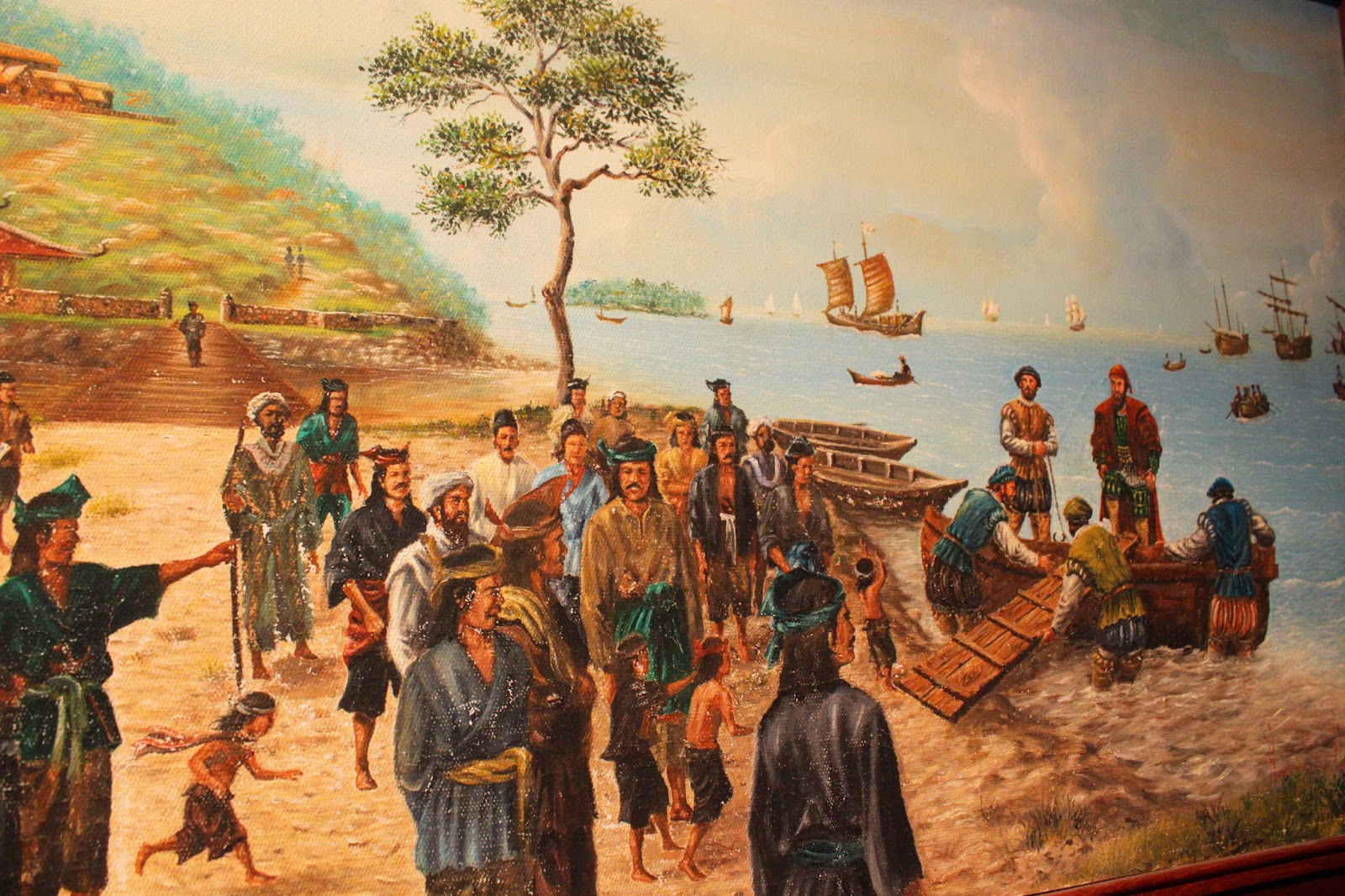Unveiling the Legacy of the Malacca Sultanate
Imagine a bustling port city, a melting pot of cultures, a hub of trade and knowledge. This was Melaka, the heart of a powerful maritime empire – the Malacca Sultanate. Its influence rippled across Southeast Asia, shaping the region's political landscape, cultural tapestry, and economic trajectory. What were the defining features, the characteristics of the Malacca Sultanate that propelled its rise to prominence?
The Malacca Sultanate, a prominent kingdom in 15th-century Southeast Asia, possessed distinct traits that contributed to its success. These attributes, collectively known as the "ciri kesultanan melayu melaka" in Malay, encompassed various aspects of its governance, economy, society, and culture. Understanding these characteristics is crucial to appreciating the sultanate's historical significance and enduring legacy.
The emergence of the Malacca Sultanate marked a pivotal moment in the history of the Malay world. Founded by Parameswara around 1400, the sultanate quickly rose to become a major center of trade, attracting merchants from across the Indian Ocean and beyond. The strategic location of Melaka, situated along the vital Strait of Malacca, played a significant role in its economic prosperity. This geographical advantage facilitated the exchange of goods between East and West, transforming Melaka into a cosmopolitan hub.
The core attributes of the Malacca Sultanate extended beyond its advantageous location. The adoption of Islam as the state religion provided a unifying force, fostering a sense of shared identity among the diverse population. Furthermore, the establishment of a well-structured administrative system, including a codified legal framework, contributed to political stability and the efficient management of the sultanate's affairs. The "Undang-Undang Melaka," or Laws of Melaka, served as a testament to the sultanate's commitment to law and order.
The Malacca Sultanate's cultural vibrancy was another defining characteristic. The confluence of Malay, Chinese, Indian, and Arab cultures created a rich and dynamic social environment. This cultural exchange enriched the arts, literature, and culinary traditions of the region, leaving an enduring impact on the Malay world. The fusion of these diverse influences contributed to the development of a unique Melakan identity, reflecting the cosmopolitan nature of the port city.
The history of the Malacca Sultanate highlights the importance of strong leadership, strategic alliances, and a thriving economy. Parameswara's vision and diplomatic skills laid the foundation for the sultanate's success. The establishment of trade relationships with China and other regional powers further solidified its position as a major player in the region. However, the sultanate's reliance on trade also made it vulnerable to external threats, ultimately leading to its downfall at the hands of the Portuguese in 1511.
The characteristics of the Malacca Sultanate offer valuable lessons for contemporary societies. The sultanate's embrace of diversity, its focus on trade and economic development, and its commitment to good governance serve as inspiring examples. Studying the rise and fall of the Malacca Sultanate provides insights into the complexities of nation-building, the importance of adapting to changing circumstances, and the enduring power of cultural heritage.
Advantages and Disadvantages of the Malacca Sultanate Model
| Advantages | Disadvantages |
|---|---|
| Strategic location facilitating trade | Over-reliance on trade made it vulnerable |
| Strong leadership and administration | Internal power struggles and succession disputes |
| Cultural diversity and exchange | External threats from colonial powers |
The legacy of the Malacca Sultanate continues to resonate in Malaysia and beyond. Its influence can be seen in the region's cultural traditions, linguistic heritage, and political systems. The sultanate's story reminds us of the importance of understanding our history to better appreciate the present and shape the future.
Frequently Asked Questions about the Malacca Sultanate:
1. Who founded the Malacca Sultanate? Parameswara.
2. When was the Malacca Sultanate founded? Around 1400.
3. Why was Melaka an important trading center? Strategic location on the Strait of Malacca.
4. What was the official religion of the Malacca Sultanate? Islam.
5. What was the Undang-Undang Melaka? The legal code of the Malacca Sultanate.
6. Which European power conquered Melaka in 1511? Portugal.
7. What were the main characteristics of the Malacca Sultanate? Strategic location, strong leadership, Islam as the state religion, cultural diversity, and a robust trading economy.
8. What is the legacy of the Malacca Sultanate? Influence on Malay culture, language, and political systems.
The Malacca Sultanate stands as a testament to the power of vision, adaptability, and cultural exchange. Its characteristics, from its strategic location to its vibrant cultural tapestry, shaped its trajectory and left an indelible mark on Southeast Asia. By understanding the key features of this influential maritime empire, we gain valuable insights into the complexities of history and the enduring power of cultural heritage. This knowledge can inspire us to embrace diversity, foster collaboration, and build a future grounded in the wisdom of the past. Explore the rich history of the Malacca Sultanate and discover the enduring legacy of this fascinating chapter in Southeast Asian history. Learn from its successes and challenges, and appreciate the profound impact it continues to have on the region today.
Upgrade your bathroom with arts crafts tile the ultimate guide
Decoding the enigma of po box 15186 albany ny 12212
Unleash the holiday spirit with christmas drawings to color













